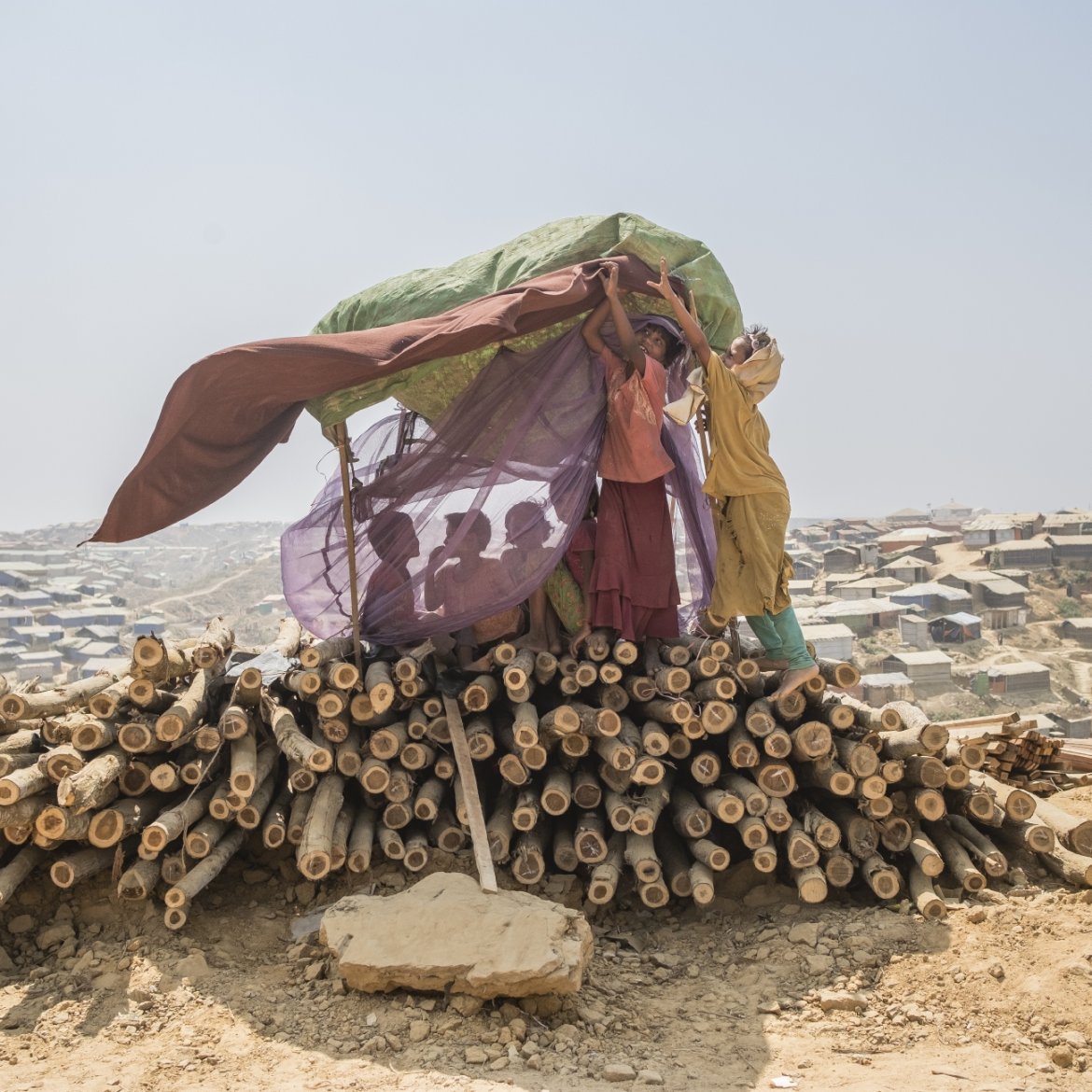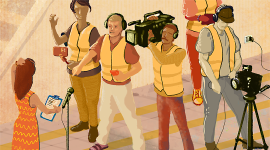"The Wretched and the Earth" photo exhibition on campus
"The Wretched and the Earth" photo exhibition on campus
The media plays an important role in telling the stories of migrants, refugees and displaced persons across the world
In today’s world, getting a message through, whether in writing, video or photography, is becoming more and more difficult. The information overload and the accessibility on a large scale to various communication tools is, indeed, an opportunity for all. However, making your story stand out from the others is becoming more and more difficult.

The world of media is rapidly adapting to this evolving reality. In the context of migration, the media is crucial in delivering verified information, informed opinions as well as balanced and inclusive narratives. The way the media cover migration will affect the range and quality of information received by the public, particularly migrants, as well as how societies perceive and relate to the issue.
All too frequently, xenophobia against migrant workers is fuelled by populist attitudes that are divorced from the reality on the ground. Wittingly or unwittingly, media can play its part in creating an unbalanced discourse about migration, including labour migration. Inaccurate, biased media reporting can lead to misinformation, and at worse, may be an instigator for discrimination and unfair treatment.
The ILO is firmly committed against these negative forces and supports the development of balanced narratives that recognize the positive contribution of migrants. The media has also an important role to play in improving public perceptions of migrant workers and refugees, and doing away with the “us versus them” discourse altogether.
For this, the work of journalists, photojournalists, and video-makers is vital, not only to ensure that certain topics do not go unnoticed or remain unknown to most people, but also and above all to maintain a high level of debate and discussion on topics that undoubtedly have a substantial impact on societies, economies and, not least, the environment.
A result, so far, that only some professionals are able to achieve and that can have a huge impact in changing the narrative of those events.
Gabriele Cecconi (Italy) is one of them. His award-winning photo reportages not only comprise beautiful pictures, but are also able to tell a story: the story of the women, men, and children, and the environment they live in, who are the real protagonists.
This is the why we decided to invite him to describe his work and share his experience. To pass on what he has seen with his own eyes – and documented with his camera to the participants that are currently attending the ITCILO Academy on Labour Migration gathering in Turin from all around the world. To support his words, we also put on display some of the fieldwork thanks to a photo exhibition of his reportage named “The Wretched and the Earth”.
The Wretched and the Earth
In August 2017, in order to escape persecution in their country of origin, Myanmar, hundreds of thousands of people of the Rohingya ethnic group fled to the region of Cox’s Bazar in neighbouring Bangladesh.
Five years on from the initial influx, one million refugees still reside in this region. Living conditions remain precarious and the future of these families is uncertain.
The current environmental crisis and its management in Bangladesh – in a region particularly fragile like Cox’s Bazar and in one of the countries that is most vulnerable to climate change – represents a unique case study and a striking example of the challenges of mass migration.
This photojournalism project aims to document the short and long-term environmental impact of a mass migration in order to comprehend the indissoluble relationship between human beings and the environment.
The project follows two main narrative threads: the people fighting to survive with few precious resources and the impact of the refugee crisis on an ecosystem that was already under substantial pressure. Usually environmental migration is understood as an exodus caused by the effects of climate change, what is it like then in the case of a mass migration that is actually causing a huge impact on the environment and the ecosystems?
In his intervention at the Labour Migration Academy, Cecconi talked about the motivations which led him to document migration and the complex, at times conflicting desire to get at the heart of a story while respecting the human dignity of those involved. You can find out more about Gabriele’s work, his vision and his approach to communicating migration in the interview below.

Gabriele Cecconi (Italy)
What challenges do you face as a photographer documenting migration?
The main challenge is to find unique stories that stand out of the dominant narrative proposed by the mass media, yet without falling into stereotypes or sensationalism. It is easy to photograph people suffering when you are in the field. However, the most complex aspect is to be able to identify the deepness of the situation starting from a documentary perspective and dive into the complexity of the reality.
What do you strive to communicate, or even achieve, through your photographs?
I would like that my pictures be able to raise new questions in the mind of the viewers, thus helping people not to consume images in a fast way, yet to connect them to the deep of their hearts. I wish they take the opportunity to spend enough time in front of a picture and reflect about what those images are trying to convey.
How do you deal with the ethical aspects linked to picturing the lives of vulnerable populations, such as migrants?
When we speak about ethical issues in photography, I think that the viewer can easily perceive if our intentions are genuine. If we are real in what we do, people can really understand what our scope is. This helps us to address the question of ethics and to photograph only what is possible. We must avoid simplification and be genuine at all times.
Are there any particular messages, or stories, that you aim to convey through your photographs of migration?
What I try to do when I am photographing, is to find the universal in the particular and go behind the mere description of the reality in front of my eyes. I do my best to find metaphors and symbols that help me to connect the viewers with my pictures and with the message that I want to put through.
In your work “The Wretched and the Earth” you explore the issue of the impact of migration on the environment. Does it mean that migrants are responsible for making the environment worse?
We often consider migration as a consequence of the environmental crisis such as climate change. This is true, indeed. However, in my work, I tried to explain that mass migrations also have consequences on the hosting environment. Of course, the migrants themselves are not responsible for this, because they obviously need to use the resources available in order to survive. Nonetheless, this is a question that we must consider in order to learn how to better manage migration flows in the future - because they will happen forever and we have to understand how to deal with them – also from the perspective of their impact on the environment.

The ITCILO is rising to the challenge of unravelling the complex nexus between climate change, migration, and how we communicate on migration, with two new online training courses during second part of 2023. The e-learning on climate change and labour mobility will explore the potential of safe and regulated labour mobility as an adaptive strategy in response to climate change, and consider concrete strategies for effective labour market integration of people displaced due to disasters, environmental degradation and climate change.
Join our courses




